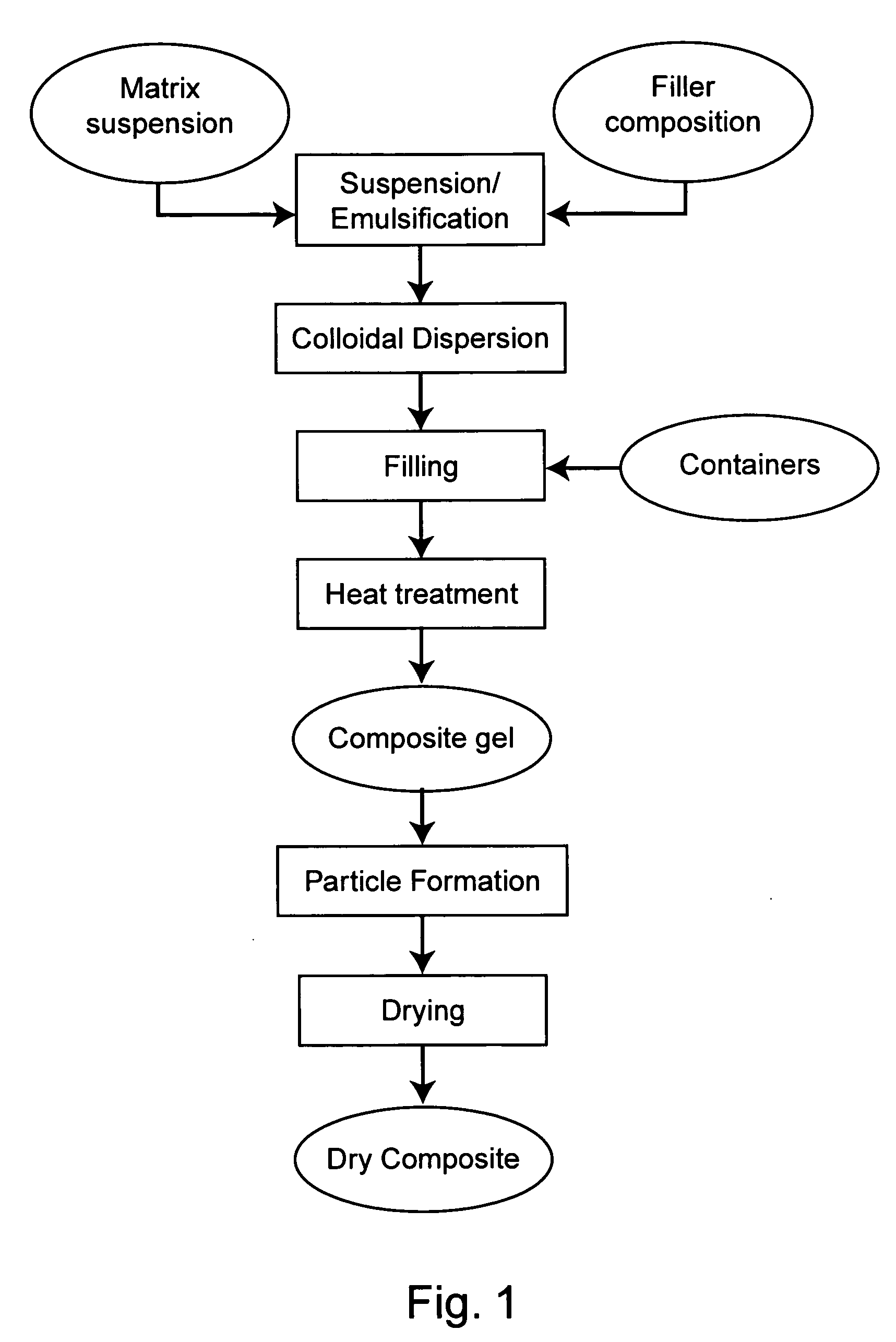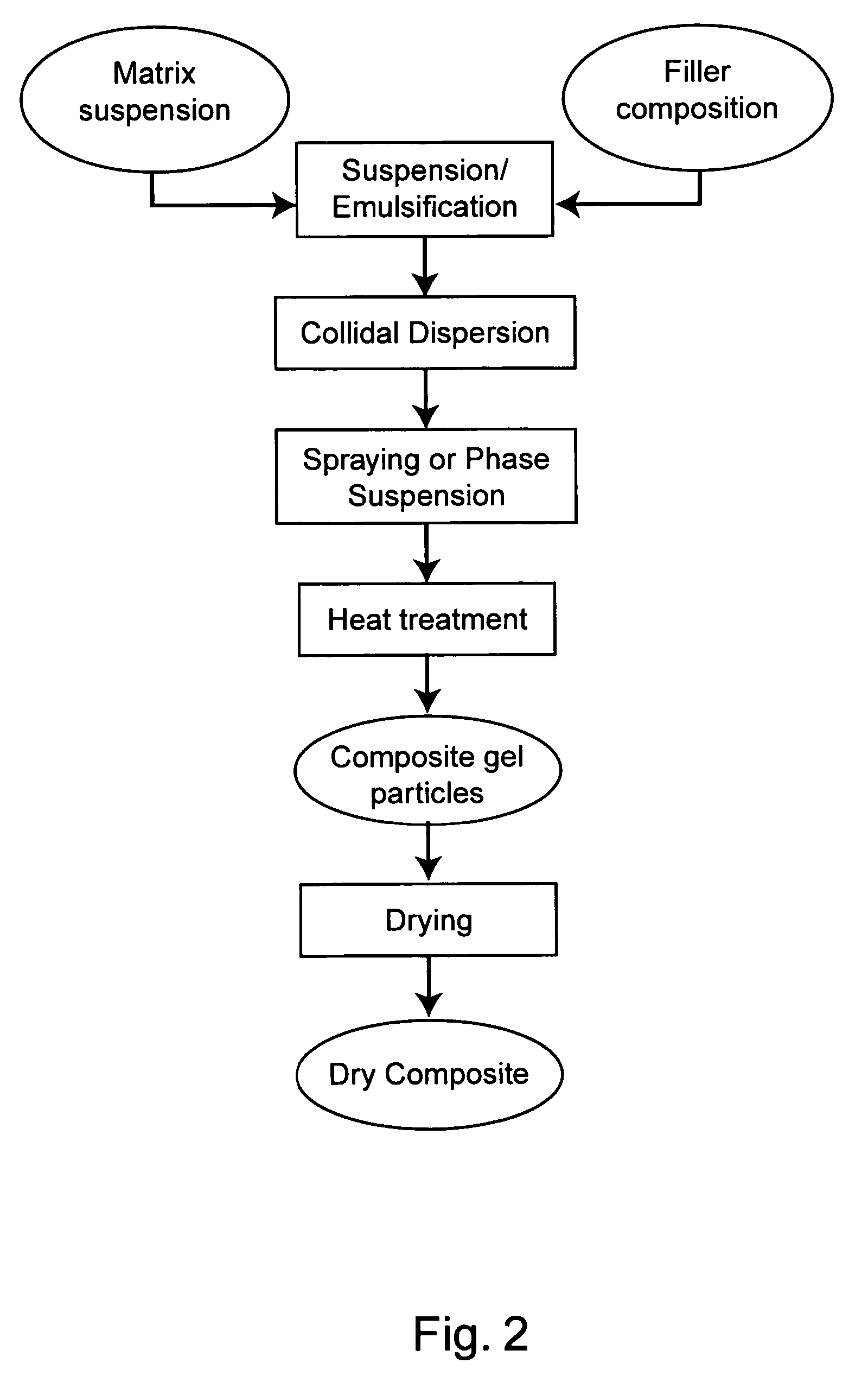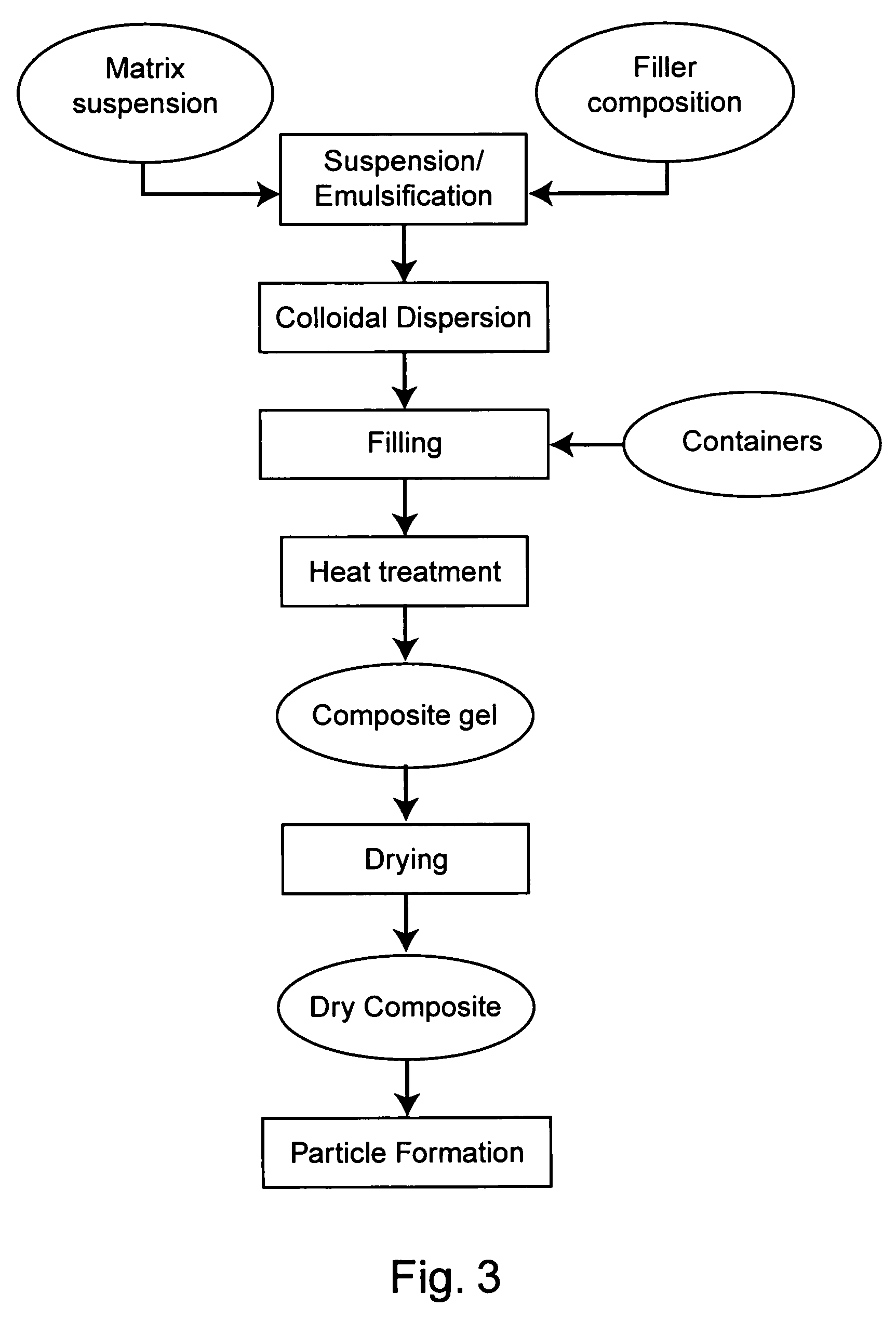Protected dry composites
- Summary
- Abstract
- Description
- Claims
- Application Information
AI Technical Summary
Benefits of technology
Problems solved by technology
Method used
Image
Examples
Embodiment Construction
[0055] The present invention provides a dry composite, e.g., to protect lipids, proteins, nutrients, and / or supplemental constituents from removal, modification, and / or degradation during passage through the upper digestive tract of an animal. The invention provides methods and systems for making and using protected dry composites.
[0056] Briefly, the dry composites of the invention include, e.g., filler particles surrounded by a dried proteinaceous cross-linked structural matrix. The protective structural matrix may become rehydrated before or during ingestion but remains insoluble and substantially immune to attack by, e.g., microbes or proteases of the upper digestive tract during the time period of transit. The dry composite of the invention can then be dissolved or disassociated, e.g., on exposure to the conditions of a ruminant's abomasum or an animal's lower digestive tract.
[0057] The dry composite can be used to, e.g., increase availability of fatty acids in the abomasum an...
PUM
 Login to View More
Login to View More Abstract
Description
Claims
Application Information
 Login to View More
Login to View More - R&D
- Intellectual Property
- Life Sciences
- Materials
- Tech Scout
- Unparalleled Data Quality
- Higher Quality Content
- 60% Fewer Hallucinations
Browse by: Latest US Patents, China's latest patents, Technical Efficacy Thesaurus, Application Domain, Technology Topic, Popular Technical Reports.
© 2025 PatSnap. All rights reserved.Legal|Privacy policy|Modern Slavery Act Transparency Statement|Sitemap|About US| Contact US: help@patsnap.com



